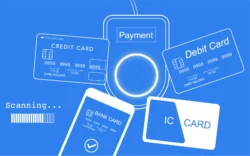The digital age has ushered in a plethora of innovations, reshaping how we engage in everyday transactions. At the forefront of this digital revolution is cryptocurrency, a digital or virtual form of currency that uses cryptography for security, making it nearly impossible to counterfeit. As the world gravitates towards more secure, fast, and global methods of payment, cryptocurrencies stand out as a promising solution. This article explores how to accept crypto payments, dissecting their workings, benefits, challenges, and the potential future that lies in embracing these digital transactions.
The Rise of Cryptocurrency Payments
The journey of cryptocurrency from an obscure digital novelty to a recognized medium of exchange is nothing short of remarkable. It began with the launch of Bitcoin in 2009, which introduced the world to blockchain technology. This was a new way of recording transactions in a secure, transparent, and decentralized manner. Today, the cryptocurrency market is teeming with thousands of digital currencies, each offering unique benefits and functionalities.
The adoption of cryptocurrency payments has been varied, with some sectors jumping on the bandwagon more quickly than others. The tech industry, online retail, and even some segments of the hospitality and real estate sectors are leading the charge. These industries are drawn to the key benefits of cryptocurrency payments: unparalleled speed of transactions, regardless of the geographical location of the parties involved; enhanced security, given the cryptographic foundation of these currencies; and the elimination of intermediaries, reducing transaction costs and complexity.
How Cryptocurrency Payments Work
At the heart of cryptocurrency payments is blockchain technology. This decentralized ledger records all transactions across a network of computers, ensuring transparency and security. Unlike traditional payment methods that rely on banks to verify transactions, cryptocurrency transactions are verified by a consensus among network participants.
A typical cryptocurrency payment involves the following steps: the sender initiates the transaction using the recipient’s public address, the network validates the transaction using cryptographic techniques, and upon successful validation, the transaction is added to the blockchain. This process contrasts sharply with traditional methods, highlighting the efficiency and security that cryptocurrencies bring to financial transactions.
Challenges and Solutions in Crypto Payments
Despite their advantages, cryptocurrency payments are not without challenges. Volatility is a significant concern, with the value of cryptocurrencies subject to rapid fluctuations. This unpredictability can complicate pricing and transactions for businesses. However, solutions like stablecoins and real-time conversion services are emerging to mitigate these issues.
The regulatory landscape for cryptocurrencies is complex and varied across jurisdictions, posing a challenge for global adoption. Efforts to establish clear legal frameworks and standards are underway, aiming to provide stability and confidence for users and businesses alike.
Security, while a hallmark of blockchain technology, remains a concern due to the potential for loss or theft of private keys. Advances in wallet technology and security practices are helping to address these risks, ensuring that cryptocurrency transactions are both secure and user-friendly.
Future of Payments: What Lies Ahead
The integration of cryptocurrency payments with traditional financial systems is already beginning, bridging the gap between digital and fiat currencies. Innovations such as smart contracts and decentralized finance (DeFi) platforms promise to further expand the possibilities for cryptocurrency transactions, making them more versatile and integrated into everyday financial activities.
The potential for universal adoption of cryptocurrencies as a mainstream payment method is tantalizing, though not without challenges. Issues like scalability, energy consumption, and universal access need to be addressed to realize this potential fully.
Enhancing Global Commerce
One of the most compelling arguments for the adoption of cryptocurrency payments lies in their ability to facilitate global commerce. Traditional cross-border transactions are often slow, expensive, and fraught with regulatory hurdles. In contrast, cryptocurrencies offer a streamlined and cost-effective alternative, enabling businesses to tap into new markets and connect with customers worldwide without the need for currency conversion or dealing with varying banking regulations.
Moreover, cryptocurrencies can play a pivotal role in financial inclusion, providing access to financial services for unbanked or underbanked populations in developing countries. With only a smartphone and internet access, individuals can participate in the global economy, receive remittances, and access a wide range of financial services without the need for a traditional bank account. This inclusivity has the potential to spur economic growth and opportunity in some of the world’s most disadvantaged regions.
The Environmental Impact of Cryptocurrency Mining
While the benefits of cryptocurrency are clear, it’s also important to address the environmental impact associated with cryptocurrency mining, particularly for proof-of-work (PoW) cryptocurrencies like Bitcoin. Mining operations’ energy consumption has raised concerns over their carbon footprint. However, the cryptocurrency community is actively seeking solutions, including the development of more energy-efficient consensus mechanisms like proof-of-stake (PoS), which Ethereum has transitioned to with its Ethereum 2.0 update.
Additionally, there’s a growing movement towards using renewable energy sources for mining operations. By leveraging solar, wind, and hydroelectric power, the industry aims to mitigate its environmental impact and pave the way for a more sustainable future for cryptocurrency.
Fostering Trust and Security in Digital Transactions
Trust and security remain paramount for the widespread acceptance of cryptocurrency payments. Blockchain technology’s inherent security features provide a solid foundation, but ongoing efforts to enhance security protocols and educate users on safe practices are crucial. Initiatives like multi-factor authentication, hardware wallets, and secure backup procedures help safeguard users’ assets against theft and fraud.
The decentralization of blockchain also plays a crucial role in enhancing trust. By eliminating central points of failure and ensuring transactions are transparent and immutable, blockchain technology can prevent fraud and corruption, making it an attractive option for sectors prone to these issues.
The Role of Regulation and Standardization
For cryptocurrencies to reach their full potential as a mainstream payment method, clear and consistent regulatory frameworks are essential. Regulators worldwide are grappling with how to oversee these digital assets without stifling innovation. The goal is to protect consumers, ensure financial stability, and prevent illicit activities while supporting the growth of the cryptocurrency ecosystem.
Standardization efforts, such as the development of common protocols and interfaces for cryptocurrency transactions, are also underway. These initiatives aim to enhance interoperability among different cryptocurrencies and with traditional financial systems, making it easier for businesses and consumers to adopt and use digital currencies.
Conclusion
Cryptocurrency payments represent a significant leap towards seamless, secure, and efficient transactions on a global scale. While challenges remain, the continuous evolution of technology and regulatory frameworks is paving the way for wider acceptance and integration of these digital currencies into the fabric of our financial transactions. For businesses and consumers alike, the adoption of cryptocurrency payments offers a glimpse into a future where financial transactions are not just transactions but a seamless part of our digital lives.







